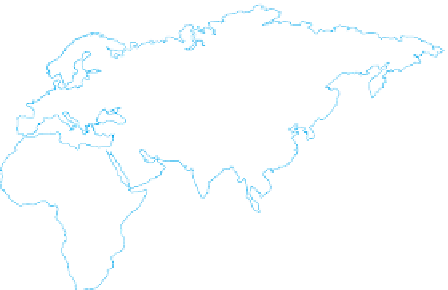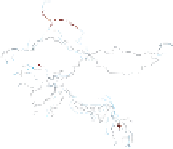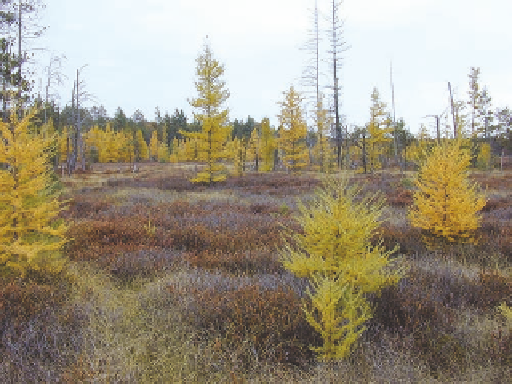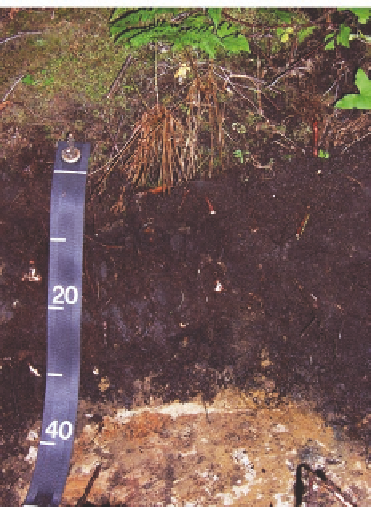Geoscience Reference
In-Depth Information
Global distribution of Histosols
(a)
(c)
Figure 11.28 Histosols.
(a) Generalized map of Histosols on
Earth. These soils occur on about 1% of Earth's ice-free land area.
(
Source:
U.S. Department of Agriculture.) (b) A typical Histosol
landscape in Michigan forms in bogs like this where organic mat-
ter decomposes slowly. (c) A Histosol from Upper Michigan. Note
the very dark color of this soil, which reflects the high amount of
organic matter. The lighter sediment visible at a depth of about
40 cm is a mineral deposit on which the soil formed.
(b)
are estimated to occupy about 9% of Earth's ice-free land area,
including most of the state of Alaska (Figure 11.29a). Thus,
these soils are frozen most of the year, resulting in perma-
frost within 2 m of the surface. Because these soils are very
cold, the decomposition of organic matter proceeds even more
slowly than where Histosols occur. As a result, Gelisols con-
tain large amounts of organic carbon, some of which is in the
form of muck or peat at the surface, and are thus dark in color
(Figure 11.29b). Given that Gelisols regularly freeze and thaw,
they are actively mixed and are thus frequently associated with
deformed topography (Figure 11.29c).
These soils occur over about 7% of Earth's soil network, includ-
ing most of the American Midwest and Great Plains, a broad belt
across Eurasia (including the Russian steppe), and the Pampas
in South America (Figure 11.30a). Mollisols are closely associ-
ated with the more humid parts of the dry midlatitude climate
and associated grassland vegetation (Figure 11.30b). They are
the most extensive soil order in the United States and are found
on 21.5% of the land area (Figure 11.30a). In the Great Plains,
the presence of Mollisols is directly linked to the fact that the
region lies within the Rocky Mountain rain shadow.
Mollisols form in association with a specific pedogenic pro-
cess called
calcification
. As with podzolization, vegetation plays
an important role in the calcification process. Where podzoliza-
tion occurs, deciduous and coniferous trees produce a needle-leaf
Mollisols
Moving away from the humid zones, we next look
at soils that form in more arid regions, beginning with
Mollisols
.
Mollisols
Soils that form through calcification and have a
mollic epipedon that overlies mineral matter, which is more
than 50% saturated with base ions.
Calciication
A regional soil-forming process in which cal-
cium carbonate is cycled within the soil.



































































































































































